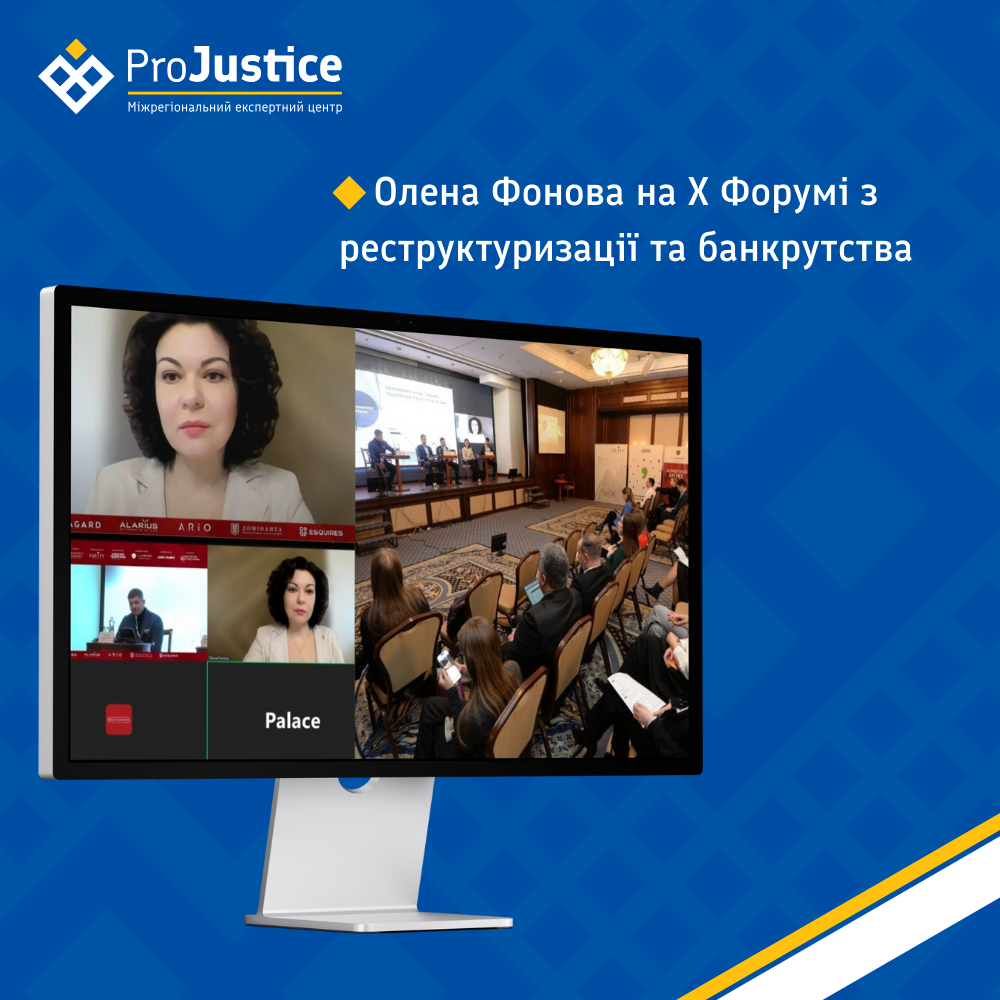ON DECEMBER 9, THE EU PROJECT “PRAVO-JUSTICE ” HELD A PRESS BREAKFAST “THE LAW ON MEDIATION HAS BEEN ADOPTED: HOW TO IMPLEMENT IT EFFECTIVELY?”.
DURING THE EVENT, REPRESENTATIVES OF THE MINISTRY OF JUSTICE OF UKRAINE, THE VERKHOVNA RADA, THE MEDIATION, LEGAL AND JUDICIAL COMMUNITIES, EU PROJECT EXPERTS, AND JOURNALISTS FROM LEGAL AND BUSINESS MEDIA DISCUSSED THE MAIN PROVISIONS OF THE LAW ADOPTED IN NOVEMBER AND THE NECESSARY STEPS FOR ITS SUCCESSFUL IMPLEMENTATION.
“We thank everyone who made significant intellectual, political and other efforts to adopt the Law on Mediation.
The Project, along with other donors, provided technical assistance and acted as a facilitator during the drafting of the law.
We will continue to support the implementation and promotion of mediation so that people are aware of this dispute resolution option and share best practices in this area.
We will make every effort to make this institution work as an effective way to resolve disputes in Ukraine.” , – said Eric Svanidze, in. о. Head of the EU Project “Pravo-Justice”.
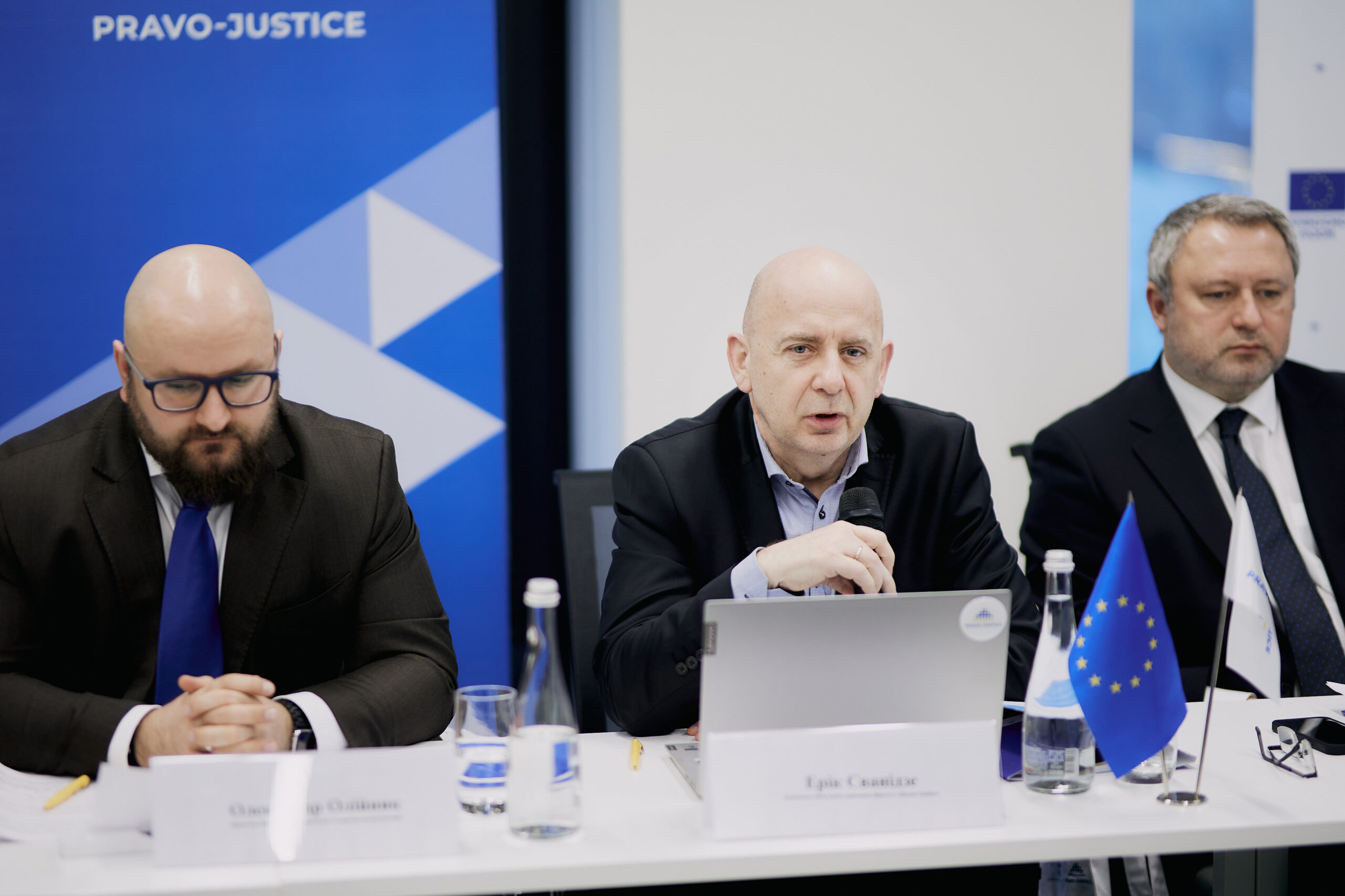
The key feature of the Law is its framework.
It defines the basic concepts, principles of mediation, rights and obligations of the parties, requirements for agreements, etc.
According to the law, mediation is an out-of-court, voluntary, confidential, structured procedure in which the parties, with the help of a mediator, try to prevent or resolve a conflict (dispute) through negotiations.
At the same time, the mediator does not find fault and does not make decisions on the case.
He or she is responsible for following the procedure and helps the parties find a solution that is acceptable to both of them. “Mediation is an alternative way to resolve issues and not bring them to a conflict, which will always result in one party being dissatisfied with the court’s decision. The introduction of mediation in Ukraine is about understanding and reducing the degree of conflict in society. The main thing is for people to start taking responsibility for their lives, and mediators will help them with this,” said Andriy Kostin, Chairman of the Verkhovna Rada Committee on Legal Policy.
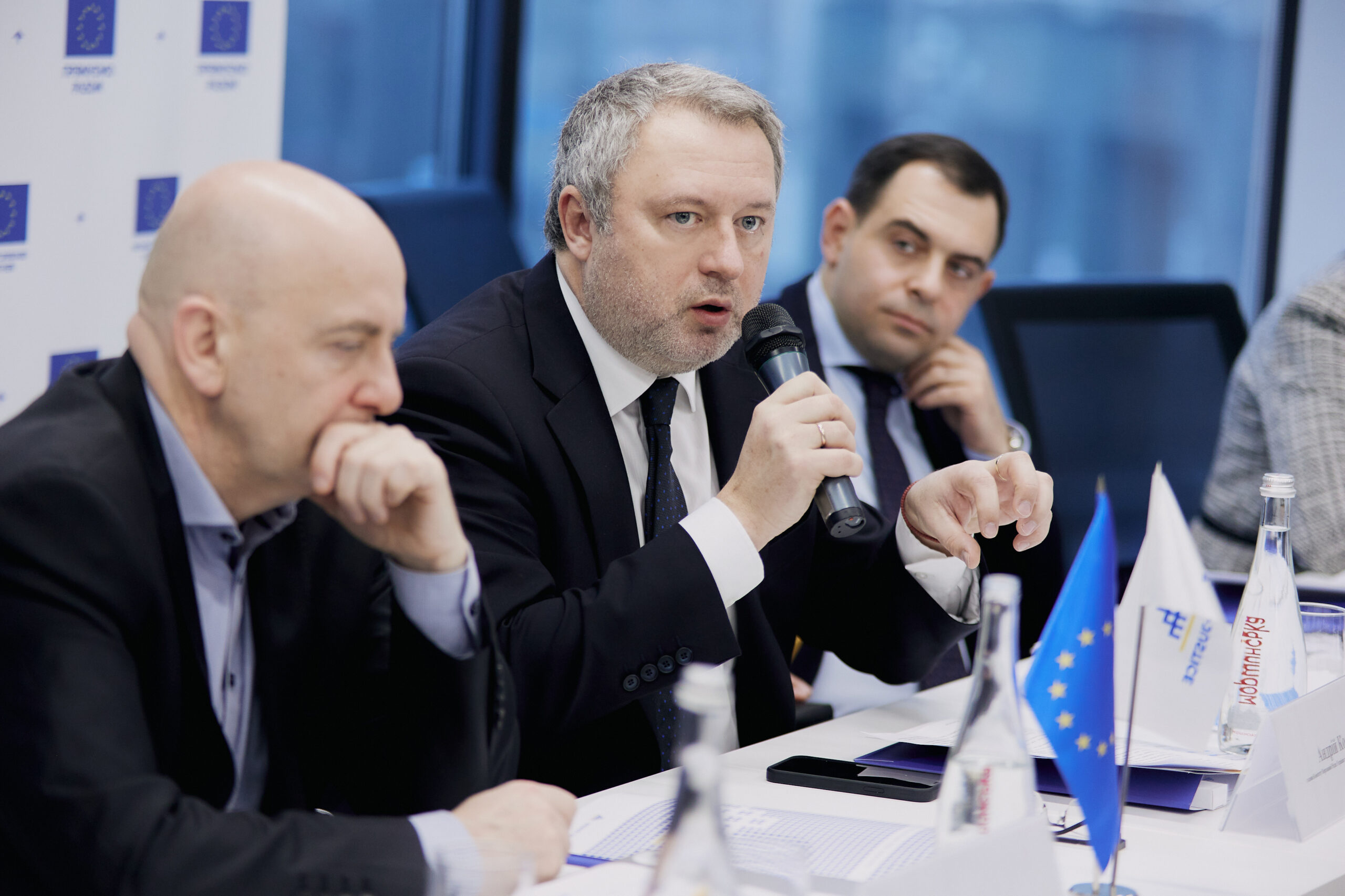
According to Oleksandr Oliynyk, Director of the Directorate of Justice and Criminal Justice at the Ministry of Justice of Ukraine, a mediator can be found in publicly available registers on the Internet: “These will be people who either have already been trained at the time of the adoption of the law or who will be trained afterwards. The training will consist of at least 90 hours of study, of which 45 hours will be practical training. After that, a person will receive a certificate and the right to engage in mediation.” Mediation can be used in a variety of disputes: from divorce and property division to appealing against dismissal, disputes between business and the state.
Moreover, mediation is possible both before going to court and during court proceedings, and even during the execution of a court decision.
The main advantages of this type of dispute resolution include:
- saving time and financial resources;
- relieving emotional stress;
- the ability to maintain relationships;
- Finding a solution focused on the interests and needs of all parties;
- high probability of voluntary fulfillment of agreements;
- avoiding the stress associated with court proceedings.
In addition, the law introduces an incentive for pre-trial reconciliation – if the parties reach an agreement through mediation, 60% of the court fee is refunded.

“The main task of all legal institutions is to build a state governed by the rule of law. We should not determine who is more important. We need to focus on the goal together. I am confident that an independent judiciary that effectively protects the public will only help to make this market and this law work,” said Konstantin Kharakoz, judge-speaker of the Economic Court of Donetsk Oblast, member of the Donbas Regional Council for Justice Reform. Mediation is also appropriate in criminal cases to reconcile the victim with the suspect (accused).
According to Nadiya Stefaniv, a judge of the Criminal Court of Cassation within the Supreme Court, this requires a number of changes to the Criminal Procedure Code, including: defining a mediator as a participant in the proceedings, supplementing the conditions that mitigate the punishment with the parties’ desire and attempt to reconcile. “It should be a team effort. The court, the mediator, the lawyer and the prosecutor should work together. Both at the stage of pre-trial investigation and at the stage of court proceedings, especially in the courts of first instance, so that at this level we can maximize the use of the mediation procedure and close the proceedings,” emphasized Nadiya Stefaniv.
Mediation has existed in Ukraine for almost 30 years.
However, this is the first time that the status of a mediator has been legally defined. “Enshrining the basic principles of mediation, requirements for a mediator, rights and obligations of a mediator and parties to mediation at the legislative level is an important guideline for both mediators and consumers of this service. At the same time, the framework of the law requires activity from the mediation community, which should take responsibility for developing policies, standards, accreditation procedures and other guidelines for mediator’s activities,” said Luiza Romanadze, attorney, mediator, PhD, President of the Ukrainian Academy of Mediation, expert of the Pravo-Justice Project.
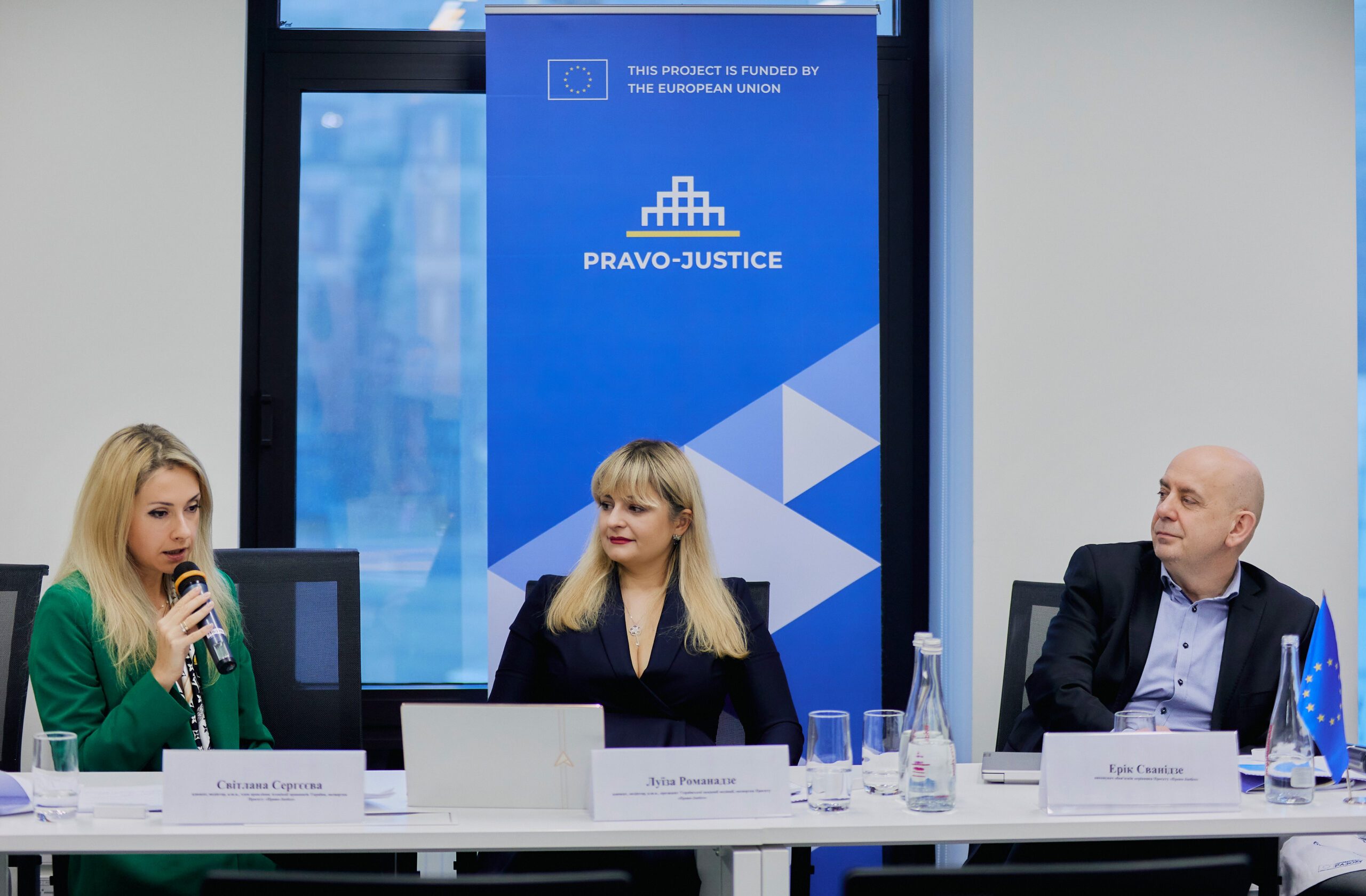
Mediation is a faster and cheaper way to resolve business disputes.
It helps to avoid lengthy and exhausting litigation, preserve partnerships and confidentiality. “Mediation expands opportunities for constructive and quick conflict resolution and opens up new perspectives for the development of partnerships in business. It is also important to dispel the myth that mediators are competitors of lawyers. In fact, we are talking about new opportunities for cooperation between them to achieve the best result for the parties to the conflict,” said Svitlana Sergeyeva, lawyer, mediator, member of the Board of the Ukrainian Bar Association, expert of the Pravo-Justice Project. On the one hand, the framework of the law prevents over-regulation of the mediation institute and stimulates its development.
On the other hand, lawyers, businesses, government agencies, and ordinary citizens may have questions: what do certain provisions mean and how can they be implemented in practice?
To answer them, the EU Pravo-Justice Project, together with the legislator and representatives of the working group of the Ministry of Justice of Ukraine that drafted the law, will prepare an explanatory article-by-article commentary to the law, written in plain language and aimed at a wide audience.
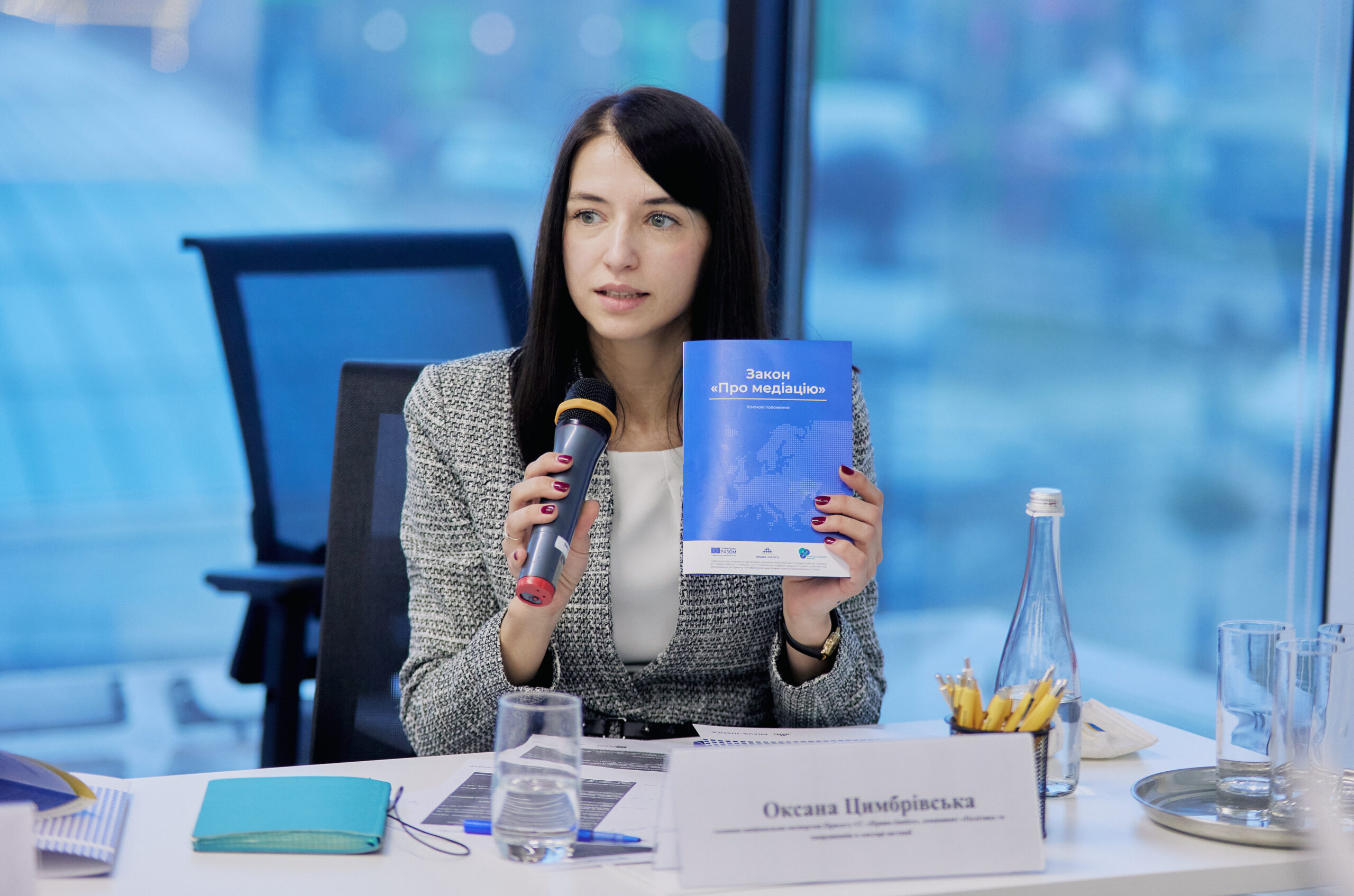
“It is important to ensure coherent coordination of all players, such as the mediation community, lawyers, judges, representatives of government agencies, and the donor community, in the process of implementing the Law on Mediation.
Given that the Law is a framework law, it would be valuable to prepare an article-by-article commentary that would explain the essence and logic of a particular provision of the Law and be a useful source of information for lawyers, civil servants and ordinary citizens.
And the EU Project “Pravo-Justice” is ready to support and coordinate the process of its creation.” Oksana Tsymbrivska, Chief National Expert of the EU Pravo-Justice Project, Justice Sector Policy and Coordination Component, said . The EU Project also plans to create a mediation IT system that will help parties to disputes find a mediator, provide feedback on the quality of their services, and help mediators to effectively process cases.
This event is a continuation of the discussions on the use of mediation in administrative, commercial and civil proceedings, as well as an in-depth analysis of legislative and institutional gaps in the implementation of mediation in Ukraine in various areas of law, conducted by the Pravo-Justice Project in 2020-2021.
Based on the results, the Project prepared reports on the categories of cases in administrative, civil, and commercial proceedings where it is advisable to use alternative dispute resolution.
Learn more about the key provisions of the Law “On Mediation” from the infographic prepared with the financial support of the European Union under the EU Pravo-Justice Project in cooperation with the Ukrainian Mediation Academy. Background information: The Verkhovna Rada adopted the Law on Mediation on November 16, 2021, after almost 12 years of attempts to regulate mediation in law. The EU Pravo-Justice Project supports justice sector reforms in Ukraine.
The Project partners include: High Council of Justice, Ministry of Justice, High Qualification Commission of Judges, Supreme Court, Council of Judges, Notary Chamber and other justice sector institutions.
The project is implemented by Expertise France with funding from the European Union.

